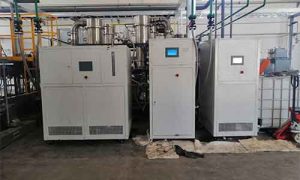chiller items
Chiller Items: Essential Components of Chiller Systems
Chiller systems are crucial for maintaining optimal temperatures in various applications, including commercial buildings, industrial processes, and data centers. These systems rely on a combination of chiller items that work together to provide efficient and effective cooling. This article delves into the key components and items that make up a chiller system, exploring their functions and the importance of selecting the right items for a chiller’s performance.

Primary Components of a Chiller System
Compressor: The heart of the chiller, the compressor is responsible for increasing the pressure and temperature of the refrigerant, allowing it to absorb and release heat effectively.
Condenser: This component cools the refrigerant by releasing heat into the surrounding environment, typically through the use of air or water.
Evaporator: The evaporator absorbs heat from the space or process that needs cooling, using the refrigerant in its low-pressure, low-temperature state.
Expansion Valve: This device controls the flow of refrigerant into the evaporator, ensuring the correct amount is used for optimal cooling.

Auxiliary Chiller Items
Pumps: Chiller systems often use pumps to circulate the refrigerant and coolant fluids through the system.
Controls: Modern chillers are equipped with sophisticated control systems that monitor and adjust the operation of the chiller for maximum efficiency and performance.
Heat Exchangers: These are used to transfer heat between the refrigerant and the coolant or the environment, and can be of various types, such as shell and tube or plate heat exchangers.
Fan Coil Units: In some systems, fan coil units are used to distribute the cooled air throughout the space.
Pipework and Insulation: The network of pipes that carry the refrigerant and coolant must be properly insulated to minimize heat loss and maintain efficiency.
Importance of Selecting the Right Chiller Items
The selection of chiller items is critical for the overall performance and efficiency of the chiller system. Factors to consider include:

System Requirements: The specific cooling needs of the application will dictate the size and type of components required.
Energy Efficiency: High-efficiency components can reduce operating costs and environmental impact.
Reliability: Durable and reliable components contribute to the longevity and stability of the chiller system.
Maintenance: Some items may require less maintenance than others, which can impact the total cost of ownership.
Conclusion
Chiller items are the building blocks of chiller systems, each playing a vital role in the cooling process. Understanding the functions of these components and the factors that influence their selection is essential for designing and maintaining efficient chiller systems. By choosing the right chiller items, users can ensure optimal performance, energy efficiency, and reliability in their cooling applications.
Related recommendations
central chiller system
295IntroductionA central chiller system is a fundamental part of many large - scale cooling setups. It serves to cool large volumes of air or water, which are then distributed to various areas withi...
View detailscombined heating & cooling
173Controlled temperature heating and cooling is a specialized approach to managing thermal conditions, emphasizing precision and stability to meet the specific requirements of an environment, proces...
View detailsair cooled process chiller
497Air-Cooled Process Chiller: Efficient Temperature Control for Industrial Processes Air-cooled process chillers are essential in industries where precise temperature control is required for proc...
View detailsCascade Low Temperature Chillers
1474Cascade Low Temperature Chillers The low-temperature cascade chiller is composed of five parts: compressor, condenser, evaporator, filter drier, and expansion throttle valve in series. The a...
View details
 LNEYA Chiller
LNEYA Chiller






HelloPlease log in